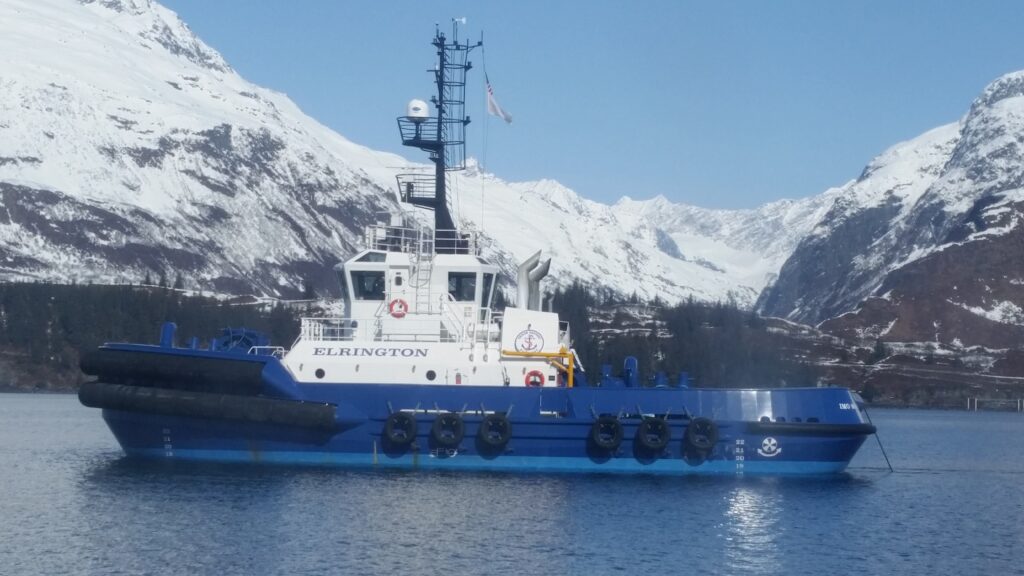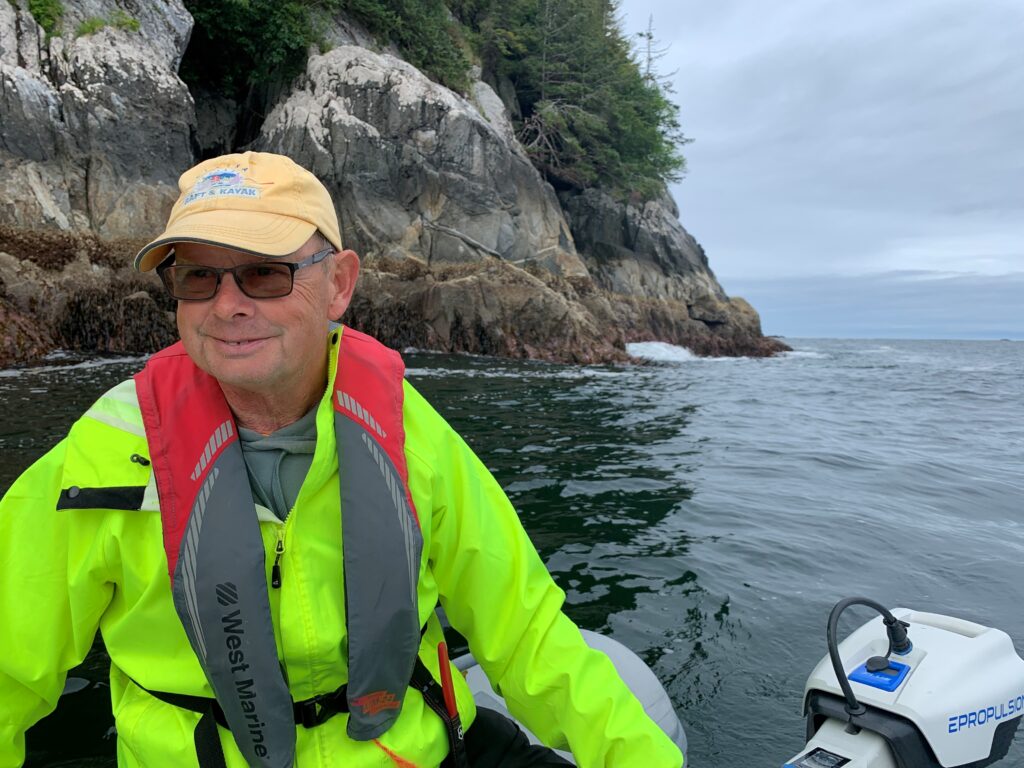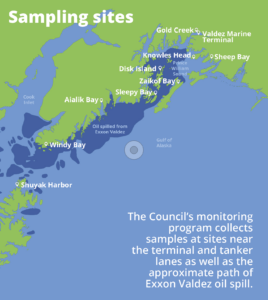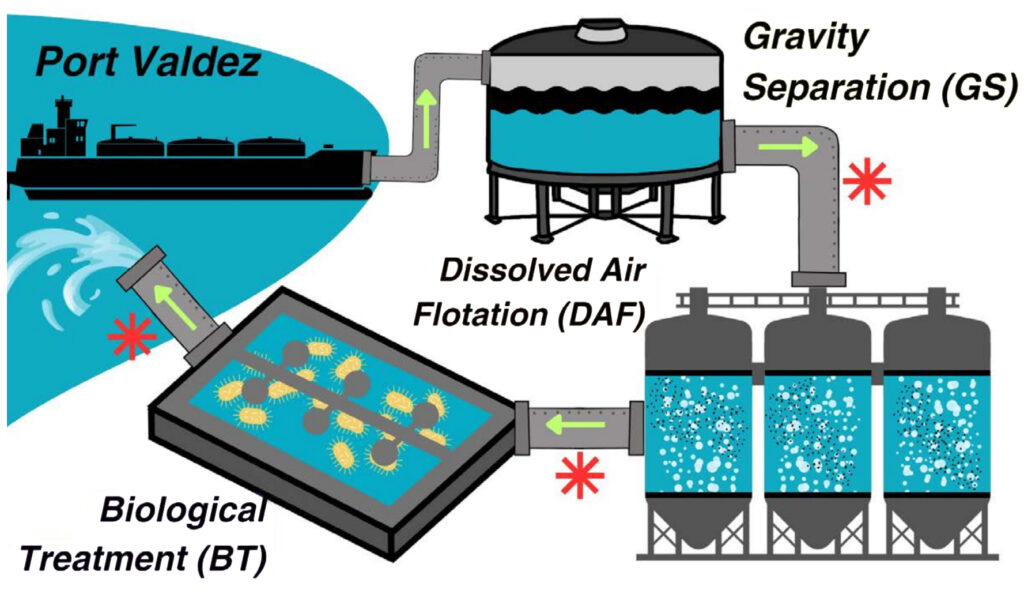How has oil transportation changed in Prince William Sound?

In 1989, the few measures in place were inadequate to prevent the Exxon Valdez oil spill and the available response resources were insufficient to contain and clean it up. Congress found that complacency among the oil industry, and the regulatory agencies responsible for monitoring the operation of the Valdez Marine Terminal and vessel traffic in Prince William Sound, was also a contributing factor in the disaster.
In the years following the spill, regulatory agencies, industry, and citizens worked together to make sure the painful memories and hard lessons of the Exxon Valdez were not forgotten. Changes were enacted to reduce the chances of another spill and to prepare for an effective cleanup if another should occur.
Much has improved in the intervening decades, but there are lingering concerns.
See also: Then & Now: 35 Years After the Exxon Valdez Oil Spill
Laws and regulations
One of the most important results of the oil spill was the enactment of the federal Oil Pollution Act of 1990, or OPA 90, which addressed many deficiencies, including liability, compensation, and oversight. It also established permanent, industry-funded citizen oversight groups for Prince William Sound and Cook Inlet.
Both federal and state laws now require more comprehensive prevention measures and planning for larger spills and require more spill response equipment to be immediately available.
An unlikely alliance of regulators, politicians, oil industry executives, and international spill response experts came together after the spill to reimagine oil spill preparedness and response in Prince William Sound. More: How Alaskans redefined oil spill prevention and response
Prevention: The most effective protection

No oil spill can ever be completely cleaned up. Preventing an oil spill is the most effective way to protect human health, local communities and economies, and the environment. Since 1989, improvements have drastically reduced the risk of oil spills.
Double hulls
All tankers transporting oil through Prince William Sound are now double hulled. Double hulls, basically two steel skins separated by several feet of space, can reduce or eliminate spills that result from groundings or collisions.
Alyeska’s Ship Escort Response Vessel System
The Ship Escort Response Vessel System, known as SERVS (SERVS’ website), was developed after the Exxon Valdez spill. SERVS’ mission is to prevent oil spills by helping tankers navigate safely through Prince William Sound and to begin an immediate response if there is a spill.
Improved tanker escorts
A major component of SERVS are the powerful tugs that escort tankers safely through our waters. Two tugs accompany each laden tanker out of Prince William Sound. These tugs can assist should the tanker experience a malfunction and begin immediate spill response if needed. SERVS also keeps trained response crews on duty around the clock and has spill response equipment ready.
Cleaning up a spill: Must be quick and effective

To fulfill their contract, Edison Chouest built new purpose-built tugs, such as the Elrington above; and spill response barges, such as the new OSRB-5. These vessels represented a significant improvement for the oil spill prevention and response system. In some cases, new general-purpose tugs replaced conventional tugs that were over 40 years old. Photo by Jeremy Robida.
While prevention measures are the best way to avoid damage from oil spills, even the best system cannot remove all risks. Alyeska’s SERVS has implemented many improvements since 1989, creating the world-class oil spill prevention and response system in place today.
Contingency plans
Contingency plans, extensive documents which contain details on preventing and cleaning up oil spills, are required by state and federal law.
Some changes in the contingency plans since 1989 include:
- Local fishing vessels and crews are an integral part of response plans. The vessels – located in the ports of Valdez, Cordova, Whittier, Homer, Seward, and Kodiak – are contracted by Alyeska to respond in the event of a spill and trained every year in spill cleanup methods.
- More emphasis on open-water and nearshore response systems, and wildlife protection.
- Special strategies have been developed to protect specific areas that have been identified as a sensitive area or a critical resource, such as salmon streams or hatcheries.
Spill drills
Before 1989, few oil spill drills were conducted in Prince William Sound. Today, three major exercises take place per year, along with several smaller drills. The drills provide opportunities for response personnel to work with equipment and practice procedures.
1989 vs 2024: Spill response equipment
In 1989, there were only 13 oil-skimming systems in Alyeska’s response inventory; today, 90 are available. Only 5 miles of oil spill boom were available in 1989; today, around 40 miles are on hand. Alyeska had only one 500,000-gallon barge at that time to store recovered oil and the water that comes with; today, storage capacity is now 37 million gallons.

Concerns remain
Although there have been many improvements, there are still many areas of concern, meriting the continued attention and sustained efforts from the Council. A few of these include:
- Risks and safety culture at the terminal: In 2023, the Council released an assessment of risks and safety culture at the Valdez Marine Terminal, concluding that there is currently an unacceptable safety risk present, although Alyeska has been working to address the concerns outlined in the report.
- Response gap: Studies by the Council have shown that it is not possible to effectively clean up an oil spill during the most extreme winds and waves in which tankers are allowed to transport oil.
- Aging infrastructure: The terminal is over 40 years old and still moving large volumes of crude oil. Constant vigilance of this aging infrastructure is needed to ensure that the necessary inspection and maintenance is performed to assure continued safe operations. A recent example the Council has been focusing on is the potential degradation and/or damage to the secondary containment liner system at the terminal.
- Complacency: As the years pass, many of those who experienced the spill and worked to improve the system have retired or passed away. Details about why protections were put in place can be lost. At the same time, state and federal environmental protections are being rolled back or weakened.
Council report on changes:
More about improvements and remaining concerns in the publication “Then & Now: 35 Years After the Exxon Valdez Oil Spill”



